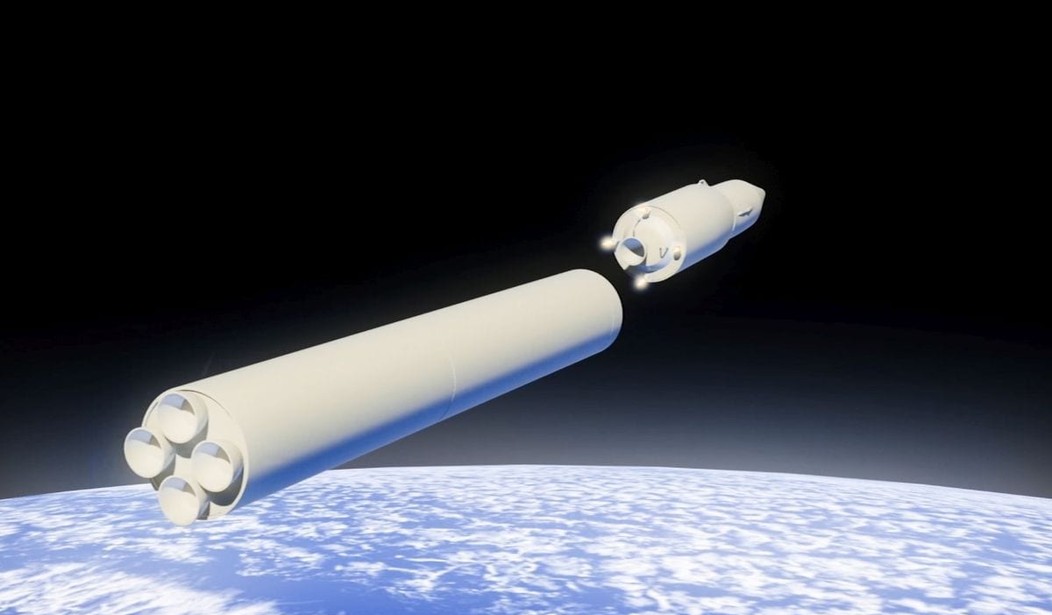Vladimir Putin made his annual state of the nation address to the Russian people where he unveiled a series of high-tech — some would say fanciful — weapons systems that he says can defeat any missile defense in the West.
File this one in the “too good to be true” category.
THE SARMAT INTERCONTINENTAL BALLISTIC MISSILE
Russia has been working for years to develop a new intercontinental ballistic missile (ICBM) to replace the Soviet-designed Voyevoda, the world’s heaviest ICBM known as “Satan” in the West that carries 10 nuclear warheads. Putin announced that the new missile, called Sarmat, is undergoing tests and a video shown during his speech featured its test launch.
Putin said Sarmat weighs 200 metric tons (220 tons) and has a higher range than Satan, allowing it to fly over the North or the South Poles and strike targets anywhere in the world. He added that Sarmat also carries a bigger number of nuclear warheads, which are more powerful than the ones on Satan.
Putin said the new ICBM accelerates faster than its predecessor, making it harder for enemy to intercept it in its most vulnerable phase after the launch. He also said Sarmat could carry an array of warheads capable of dodging missile defenses.
Experts have been saying since the 1980s that the way to defeat any missile defense is to shower its target with MIRVs — multiple warheads that would include some dummies.
But Western missile defenses are designed to shoot down one or two rogue missile launches from nations like North Korea and Iran. They were never supposed to intercept a full-scale nuclear assault.
But, if Putin can be believed, this missile is a game changer and will likely trigger a reaction in the U.S. to increase research and development on our own missiles.
THE NUCLEAR-POWERED GLOBAL-RANGE CRUISE MISSILE
Putin’s announcement that Russia has developed a nuclear-powered cruise missile marks the first time such weapon was officially mentioned.
The Russian leader said a compact, nuclear-powered engine gives the new weapon a “practically unlimited” range. He added that it has stealth capabilities making it hard to detect and high maneuverability to bypass an enemy’s defenses. He emphasized that the cruise missile is “invulnerable to any existing or perspective air and missile defense systems.”
He said the missile was successfully tested last fall but doesn’t have a name yet. He suggested the Defense Ministry hold a nationwide contest to find the best name for it.
Someone gimme whatever Vlad is smokin’:
The video showed the missile’s firing into the sky and then flying, before switching to a graphic that simulated the rocket’s meandering around the globe, headed toward the United States before turning south and flying toward the South Atlantic, and then around South America and ending up somewhere toward the U.S. West Coast.
But U.S. officials say they have been following the missile’s development for some time and that, in reality, it was not operational.
The missile was still in research and development and had crashed in testing more than once, including during a test in the Russian Arctic, a U.S. official told ABC News.
Russia has been pouring money into its military since the turn of the century but still spends only two-thirds of what the U.S. spends. Their most impressive advances in technology are largely based on what they’ve been able to steal from the U.S. and European countries. Commercial spying is a booming business in Russia.
Is it possible that Russia could have made a quantum leap in missile propulsion technology and built a cruise missile powered by a nuclear reactor? The U.S. actually built a nuclear-powered missile in the 1960s but the engine spewed radiation exhaust and was deemed too dangerous to fly. So it’s not impossible.
THE KINZHAL HYPERSONIC MISSILE
Both Russia and the U.S. have been working to develop missiles that could travel at hypersonic speed, or more than five times the speed of sound.
Putin announced Thursday the Russian military in December already put one such type of missile on duty in the Southern Military District. The missile called Kinzhal is carried by aircraft and is capable of flying at a speed 10 times the speed of sound. He added it has a range of more than 2,000 kilometers (1,250 miles) and can carry a nuclear or a conventional warhead.
A video that accompanied his statement featured a MiG-31 fighter jet carrying a balky missile under its fuselage and then launching it during a test flight. A computer animation showed the missile hitting a group of navy ships.
It is believed that the U.S. already has, or is close to deploying, a hypersonic missile, so the feat is not that impressive. The U.S. version can be launched from the air or from the sea.
Is Putin exaggerating? Almost certainly. I don’t doubt that all of his little toys are in development. Some may be close to becoming operational. But his straw man argument about besting Western missile defenses — that aren’t designed to intercept a Russian missile barrage anyway — marks this speech as pure propaganda.
Take his claims with a grain of salt.










Join the conversation as a VIP Member